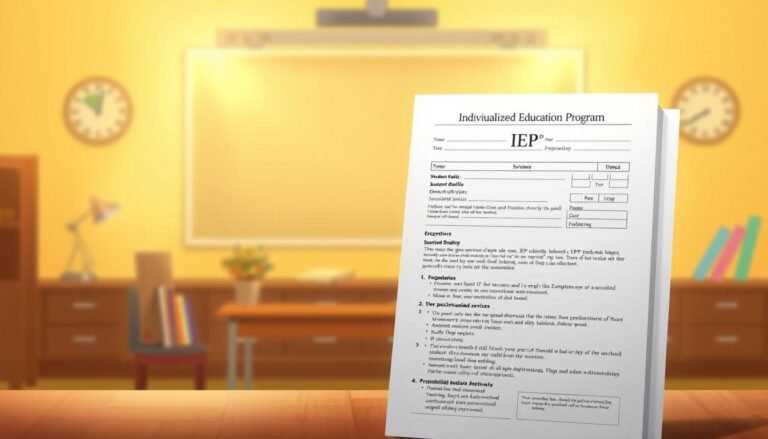
Finding Peace: Mindfulness Techniques for Anxious Parents of Children with Learning Disabilities
Introduction
As a parent, the journey can often feel overwhelming, especially when navigating the complex world of learning disabilities. Concerns about your child’s progress, the challenges they face, and the pressure of advocacy can lead to heightened anxiety. The search for serenity in the midst of chaos becomes essential. In this article, we explore Finding Peace: Mindfulness Techniques for Anxious Parents of Children with Learning Disabilities—a holistic approach to fostering peace of mind and emotional well-being.
Why Mindfulness Matters
Mindfulness is more than a trendy buzzword; it’s a powerful practice rooted in ancient traditions that promotes mental clarity, emotional regulation, and a sense of well-being. For parents of children with learning disabilities, cultivating mindfulness can significantly alleviate stress and anxiety, providing tools to calmly navigate daily challenges. When you learn to be present, you can transform your experiences, fostering a deeper connection with your child.
Understanding the Landscape
Before delving into mindfulness techniques, it’s essential to understand the context around learning disabilities. These conditions, which include dyslexia, ADHD, and autism spectrum disorder, affect a child’s ability to learn in traditional ways. As parents, being aware of the impact these challenges can have both on our children and ourselves is the first step toward finding peace.
Case Study: The Smith Family
Consider the Smith family. Emily, their 8-year-old daughter, struggles with dyslexia. Initially, the stress led to heated family discussions, stemming from a place of anxiety about her future. After researching mindfulness techniques, the Smiths began implementing simple practices at home. This shift not only changed their approach but also created a more supportive environment for Emily, helping her thrive academically and emotionally.
Practical Mindfulness Techniques for Parents
Let’s explore various mindfulness techniques tailored for parents, specifically targeting the worry and stress related to raising children with learning disabilities.
1. Breath Awareness
Description: Focusing on your breath can ground you in the present moment, reducing anxious thoughts.
How-To:
- Sit comfortably and close your eyes.
- Take a deep breath in through your nose, allowing your belly to expand.
- Exhale slowly through your mouth.
- Repeat this for 5-10 minutes, returning your focus to your breath whenever your mind wanders.
Benefit: Breath awareness helps decrease anxiety, providing a quick and accessible mindfulness technique that can be done anytime, anywhere.
2. Mindful Observation
Description: Mindful observation involves focusing on your surroundings to cultivate presence.
How-To:
- Choose an object in your home—perhaps a plant or toy.
- Observe its details: color, shape, and texture.
- Allow thoughts about your child’s challenges to fade as you devote your attention to the object.
Benefit: This practice helps draw your focus away from stressors, anchoring you in the present moment.
3. Guided Visualization
Description: Visualization creates a mental image of tranquility.
How-To:
- Find a quiet space to sit or lie down.
- Close your eyes and visualize a calm place—perhaps a beach or a serene forest.
- Engage all your senses—what do you see, hear, feel, and smell?
Benefit: Engaging in visualization offers a mental escape, promoting calmness during stressful situations.
4. Journaling for Clarity
Description: Writing can provide clarity and release built-up emotions.
How-To:
- Set aside time each day to write about your feelings, experiences, and challenges.
- Focus on gratitude by listing three things you’re thankful for regarding your child and parenting journey.
Benefit: Journaling allows for introspection and a way to process feelings, helping parents release anxiety and affirm the positives.
5. Daily Check-ins
Description: Daily check-ins help parents remain aware of their mental state.
How-To:
- Set a specific time each day for self-reflection.
- Ask yourself how you’re feeling and why.
- Identify any anxiety triggers and brainstorm coping mechanisms.
Benefit: This practice keeps parents aware of their emotional state, enabling proactive management of stressors.
The Role of Community and Support
Finding peace isn’t a solo endeavor. Surrounding yourself with supportive individuals can significantly affect your mindfulness journey.
Building Support Networks
- Parent Support Groups: Connecting with other parents who understand your struggles promotes emotional sharing and collective wisdom.
- Professional Guidance: Therapists specializing in mindfulness and parent coaching can provide personalized techniques and strategies.
Case Study: The Johnson Network
The Johnson family joined a local support group for parents of children with learning disabilities. This network introduced them to mindfulness practices specifically tailored for families. Through group activities and shared experiences, they felt less isolated and learned how to implement mindfulness techniques together, enriching their family dynamics.
Additional Mindfulness Techniques
Incorporating Movement
Physical activity can be a powerful mindfulness tool. Whether through yoga, walking, or dancing, movement can alleviate stress, boost mood, and enhance emotional well-being.
Mindful Parenting Practices
Transform daily routines into mindfulness practices:
- During meal preparation, focus on the colors and textures of ingredients.
- When engaging with your child, actively listen without planning your response.
Creating a Mindful Home Environment
Make your home a sanctuary of peace. Establish areas dedicated to mindfulness practices. Consider:
- Quiet spaces for meditation.
- Inspirational quotes displayed around the house.
- Family mindfulness activities, such as nature walks.
Conclusion
Finding peace: Mindfulness techniques for anxious parents of children with learning disabilities is not merely a collection of strategies; it’s a journey toward emotional self-care and connection. By incorporating these mindfulness practices, parents can not only manage their anxiety but also cultivate a nurturing environment that allows their children to flourish.
Motivational Takeaway
Remember, achieving peace is a process, not a destination. Embrace each moment of mindfulness as a step toward a calmer, more fulfilled parenting experience. Ground yourself in the present, and cherish the unique journey you are on with your child.
FAQs
1. What is mindfulness, and how can it help anxious parents?
Mindfulness is the practice of being fully present in the moment. For anxious parents, it helps reduce stress and fosters a greater connection with their children.
2. Can mindfulness practices be integrated into daily life?
Absolutely! Simple techniques like breath awareness or mindful observation can be practiced during daily routines.
3. How long should I practice mindfulness each day?
Starting with just 5-10 minutes can be beneficial. As you become more comfortable, you can increase the duration.
4. Are there resources available for learning mindfulness?
Yes! Numerous online platforms, books, and local workshops focus on mindfulness for parents.
5. How can I involve my child in mindfulness practices?
Children can benefit from mindfulness too! Simple activities like breathing exercises, mindful walks, and family yoga can be enjoyable and effective.
By prioritizing Finding Peace: Mindfulness Techniques for Anxious Parents of Children with Learning Disabilities, you take significant strides toward promoting your emotional well-being, ultimately enriching your family’s life. Embrace mindfulness, and discover the tranquility that awaits.
















